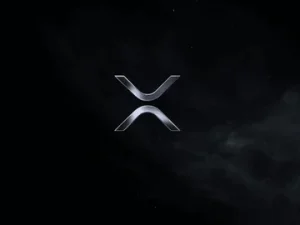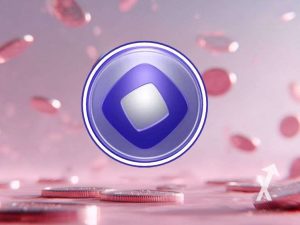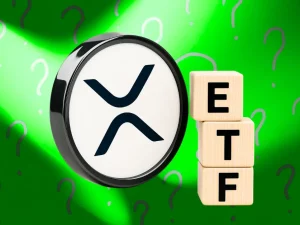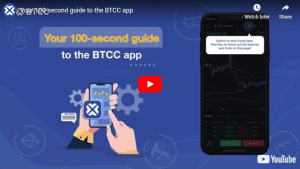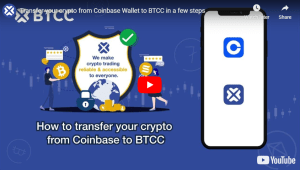Bitcoin mining has always been one of the most fascinating yet controversial parts of the cryptocurrency ecosystem. Since Bitcoin’s launch in 2009, mining has transitioned from a hobbyist activity done on personal laptops to a multi-billion-dollar global industry powered by specialized hardware and massive mining farms.
But in 2025, the big question on many investors’ minds is: Is Bitcoin mining profitable today?
In this comprehensive guide, we will cover all of these perspectives. We will analyze electricity costs, hardware requirements, mining pools, and geographic considerations. We’ll also explore whether home mining is still viable, how industrial farms dominate, and whether Bitcoin mining in 2025 is still worth the effort compared to alternatives.
What Is Bitcoin Mining?
Before diving into profitability, let’s review the basics.
Bitcoin mining is the process by which transactions on the Bitcoin blockchain are validated and added to the public ledger. Miners use computational power to solve complex cryptographic puzzles, a system known as Proof-of-Work (PoW).
•Block Rewards: Each time a block is successfully mined, the miner receives a reward in BTC. After the April 2024 halving, this reward stands at 3.125 BTC per block (down from 6.25 BTC).
•Transaction Fees: Miners also collect fees from users who want faster confirmation of transactions.
•Decentralized Security: Mining ensures the security of the Bitcoin network by making it prohibitively expensive for bad actors to rewrite the blockchain.
How Bitcoin Mining Works
Here’s the mining process in simple steps:
1.Transactions are broadcast across the Bitcoin network.
2.Miners collect transactions into blocks.
3.Using powerful hardware (ASICs), miners solve a cryptographic puzzle to validate the block.
4.The first miner to solve the puzzle announces it to the network.
5.Once confirmed, the miner receives the block reward + transaction fees.
This process repeats roughly every 10 minutes, meaning about 144 blocks are mined daily, equating to roughly 450 BTC distributed per day across the global mining industry.
/ You can claim a welcome reward of up to 10,055 USDT🎁\
Key Factors That Decide Bitcoin Mining Profitability
Mining is not just about plugging in a machine. Whether mining is profitable in 2025 depends on several key variables.
1. Electricity Costs
Electricity is the biggest expense in mining. Mining rigs can consume thousands of watts continuously.
•Cheap Power Regions: Iceland, Paraguay, and some parts of Texas (with renewable energy) offer low rates like $0.03–$0.05/kWh.
•Expensive Power Regions: Europe (e.g., Germany at ~$0.35/kWh) makes home mining almost impossible to profit from.
Profitability rule: If your electricity is under $0.08/kWh, you might have a chance. Above $0.12/kWh, profitability drops sharply.
2. Mining Hardware (ASICs)
Not all mining machines are created equal. Pr1ofitability depends on having the latest generation hardware.
•Antminer S21 Hydro (2025): ~473 TH/s at ~20 J/TH.
•WhatsMiner M60S: ~368 TH/s at ~22 J/TH.
Older models like the Antminer S9 are obsolete. New machines can cost $5,000–$10,000 per unit, creating a high barrier to entry.
3. Bitcoin Price Volatility
The single largest factor is Bitcoin’s market price. If BTC trades above $100,000, mining profits rise sharply. But if BTC crashes to $60,000 or lower, many miners become unprofitable and shut down rigs.
4. Mining Difficulty & Network Hash Rate
The Bitcoin protocol automatically adjusts difficulty every two weeks to maintain 10-minute block times. As more miners join the network, difficulty rises, reducing the odds of earning rewards.
As of 2025, Bitcoin’s hash rate is at all-time highs, meaning competition has never been tougher.
•Solo Mining: Nearly impossible for small miners today. The chance of winning a block is minuscule without massive hash power.
•Mining Pools: Most miners join pools to combine computing power and share rewards more consistently. Pool fees (usually 1–3%) eat into profits but provide stability.
Bitcoin Mining Profitability in 2025: Current Data & Trends
To answer “is Bitcoin mining profitable in 2025”, let’s analyze real profitability scenarios.
Using a Bitcoin mining profitability calculator, suppose:
•ASIC: Antminer S21 Hydro (~473 TH/s, 20 J/TH).
•Electricity: $0.05/kWh.
•BTC Price: $100,000.
•Network Difficulty: ~88T (2025 estimates).
•Daily revenue: ~$25–30 per machine.
•Daily electricity cost: ~$12–14.
•Net profit: ~$12–16/day.
At higher electricity costs ($0.12/kWh), profit can drop close to zero.
Case Studies: Mining in Different Countries
Profitability varies by region due to power prices and regulations.
•U.S. (Texas): Low energy costs, miner-friendly policies. Profitable if using renewable energy.
•Germany: Extremely high energy prices. Home mining is rarely profitable.
•Norway/Iceland: Abundant hydro/geothermal energy. Popular for industrial mining.
•Kazakhstan: Cheap energy but stricter regulations have reduced mining activity.
•China: Still significant underground mining despite official bans.
Conclusion: Location is everything. Two identical miners can produce wildly different profits depending on electricity costs.
Bitcoin Halving and Its Effect on Profitability
Every four years, Bitcoin undergoes a halving, cutting block rewards in half. This makes profitability more difficult unless the BTC price rises to compensate.
•2012 Halving: Block reward cut from 50 BTC to 25 BTC. Price surged afterward.
•2016 Halving: Cut from 25 BTC to 12.5 BTC. Again, a bull run followed.
•2020 Halving: Reward dropped to 6.25 BTC. Price soared from ~$9,000 to over $60,000.
•2024 Halving: Now at 3.125 BTC per block.
In 2025, miners face tighter margins. Profitability depends on BTC price continuing to rise, possibly beyond $120,000, to offset reduced rewards.
Home Mining vs. Industrial Mining
Home Mining
•Requires expensive ASICs and high power bills.
•Generates excessive heat and noise.
•Profits are minimal unless electricity is nearly free.
For most individuals, home Bitcoin mining in 2025 is not profitable.
Industrial Mining
•Large mining farms with thousands of ASICs.
•Benefit from bulk hardware deals and industrial electricity rates.
•Often set up near renewable energy plants for cheap power.
Industrial mining remains profitable but requires millions of dollars in capital.
Cloud Mining: Profitable or a Scam?
Cloud mining services rent hash power to individuals. While it sounds appealing, most cloud mining companies have poor reputations.
•High fees eat into profits.
•Many platforms are outright scams.
•Users rarely break even compared to buying BTC directly.
Verdict: Cloud mining is rarely profitable and is riskier than traditional mining.
/ You can claim a welcome reward of up to 10,055 USDT🎁\
Bitcoin Mining vs. Alternatives
Is mining the best way to profit from Bitcoin? Let’s compare.
•Mining BTC: Requires heavy upfront costs and ongoing expenses.
•Staking ETH or other PoS tokens: Offers 3–6% annual returns with lower risk.
•Trading/Investing: Buying and holding BTC often outperforms mining for small investors.
For individuals, buying and holding BTC is often more profitable than mining.
Hidden Costs & Risks of Mining
Mining has hidden expenses beyond hardware and electricity:
•Cooling Systems: ASICs produce massive heat; cooling can double electricity bills.
•Maintenance & Repairs: ASICs break down, requiring costly replacements.
•Regulation: Governments may tax or ban mining.
•Market Risks: Prolonged BTC downturns can make mining unprofitable.
Environmental Impact & Sustainable Mining
Bitcoin mining faces criticism for its carbon footprint. But sustainable mining is growing:
•Many farms now use hydro, wind, and solar power.
•Some companies repurpose wasted natural gas for mining.
•“Green mining” initiatives aim to improve Bitcoin’s environmental reputation.
Future of Bitcoin Mining Profitability
•Halving Events: Block rewards will drop again in 2028 to 1.5625 BTC.
•Transaction Fees: May play a bigger role in miner revenue.
•AI + Mining Integration: Advanced cooling and optimization may cut costs.
•Decentralization Pressure: Regulators may favor greener, smaller operations.
How to Calculate Your Mining Profitability (Step by Step)
1.Choose your ASIC model and note its hash rate + power consumption.
2.Input your local electricity cost ($/kWh).
3.Use a mining profitability calculator (e.g., WhatToMine).
4.Adjust BTC price assumptions.
5.Compare gross revenue vs. electricity + maintenance costs.
Always calculate ROI before buying mining equipment.
Should You Start Mining Bitcoin in 2025?
Pros
•Direct exposure to BTC rewards.
•Potentially profitable in low-cost regions.
•Contributes to Bitcoin network security.
Cons
•High capital investment.
•Increasing difficulty and declining block rewards.
•Risk of government restrictions.
Final Verdict: For most individuals, buying and holding Bitcoin is more profitable than mining in 2025. Mining remains viable for industrial operators with cheap renewable energy.
Conclusion
So, is Bitcoin mining profitable in 2025?
•For home miners, the answer is usually no unless electricity is nearly free.
•For industrial operations, mining can still be profitable, especially with cheap renewable power and the latest ASICs.
•For small investors, buying and holding BTC—or exploring staking and DeFi—is often more cost-effective.
Mining remains the backbone of Bitcoin’s security. But in 2025, it has evolved into a capital-intensive industry where only the most efficient survive.
FAQs
Q1: Is Bitcoin mining profitable in 2025?
Yes, but mostly for large-scale miners with cheap electricity and modern ASICs. For most individuals, buying BTC directly is more profitable.
Q2: How much can you make mining Bitcoin today?
With an Antminer S21 Hydro and $0.05/kWh electricity, profits may reach ~$12–16/day per unit at BTC ~$100K.
Q3: Is home Bitcoin mining profitable?
No. High power costs, noise, and hardware expenses make home mining unprofitable in most regions.
Q4: What is the impact of Bitcoin halving on profitability?
The April 2024 halving reduced rewards to 3.125 BTC, cutting miner revenue. Prices must rise to sustain profits.
Q5: Is cloud Bitcoin mining profitable?
Rarely. Most cloud mining services charge high fees or are scams.
For more detailed market analysis, strategies, and educational resources, visit BTCC Academy and stay ahead of the curve in the rapidly evolving crypto space.
How to Trade Crypto on BTCC?
This brief instruction will assist you in registering for and trading on the BTCC exchange.
Step 1: Register an account
The first step is to hit the “Sign Up” button on the BTCC website or app. Your email address and a strong password are all you need. After completing that, look for a verification email in your inbox. To activate your account, click the link in the email.

Step 2: Finish the KYC
The Know Your Customer (KYC) procedure is the next step after your account is operational. The main goal of this stage is to maintain compliance and security. You must upload identification, such as a passport or driver’s license. You’ll receive a confirmation email as soon as your documents are validated, so don’t worry—it’s a quick process.

Step 3. Deposit Funds
After that, adding money to your account is simple. BTCC provides a range of payment options, such as credit cards and bank transfers. To get your money into your trading account, simply choose what works best for you, enter the amount, and then follow the instructions.
- Fiat Deposit. Buy USDT using Visa/Mastercard (KYC required).
- Crypto Deposit. Transfer crypto from another platform or wallet.

Step 4. Start Trading
If you wish to follow profitable traders, you might go for copy trading, futures, or spot trading. After choosing your order type and the cryptocurrency you wish to trade, press the buy or sell button. Managing your portfolio and keeping track of your trades is made simple by the user-friendly interface.

Look more for details: How to Trade Crypto Futures Contracts on BTCC
BTCC FAQs
Is BTCC safe?
Based on its track record since 2011, BTCC has established itself as a secure cryptocurrency exchange. There have been no reports of fraudulent activity involving user accounts or the platform’s infrastructure. By enforcing mandatory know-your-customer (KYC) and anti-money laundering (AML) procedures, the cryptocurrency trading platform gives consumers greater security. For operations like withdrawals, it also provides extra security features like two-factor authentication (2FA).
Is KYC Necessary for BTCC?
Indeed. Before using BTCC goods, users must finish the Know Your Customer (KYC) process. A facial recognition scan and legitimate identification documents must be submitted for this process. Usually, it is finished in a few minutes. This procedure has the benefit of strengthening the security of the exchange and satisfying legal requirements.
Because their accounts will have a lower daily withdrawal limit, those who do not finish their KYC are unable to make deposits. It should be noted that those who present a legitimate ID without a facial recognition scan will likewise have restricted withdrawal options.
Is There a Mobile App for BTCC?
Indeed. For users of iOS and Android, BTCC has a mobile app. The exchange’s website offers the mobile app for download. Since both the web version and the mobile app have the same features and capabilities, they are comparable.
Will I Have to Pay BTCC Trading Fees?
Indeed. BTCC levies a fee for trade, just like a lot of other centralised exchanges. Each user’s VIP level, which is unlocked according to their available money, determines the different costs. The BTCC website provides information on the charge rates.
Can I Access BTCC From the U.S?
You can, indeed. According to its website, BTCC has obtained a crypto license from the US Financial Crimes Enforcement Network (FinCEN), which enables the cryptocurrency exchange to provide its services to investors who are headquartered in the US.
According to BTCC’s User Agreement document, its goods are not allowed to be used in nations and organisations that have been sanctioned by the United States or other nations where it has a licence.
BTCC Guide:
Crypto Buying Guides:
Crypto Prediction:
- Ethereum (ETH) Price Prediction 2025,2026, 2030 — Will ETH Reach $10,000?
- Ethereum Price Prediction 2025, 2026,2030: How High Can ETH Go in 2024?
- Bitcoin (BTC) Price Prediction 2025, 2026,2030 — Is BTC a Good Investment?
- Ripple (XRP) Price Prediction 2025, 2026,2030 — Will XRP Reach $1 After SEC Lawsuit?
- Pi Coin Price Prediction 2025,2026,2030 — Is Pi Coin a Good Buy?
- Pepe (PEPE) Price Prediction 2025, 2026,2030 – Will PEPE Reach $1





